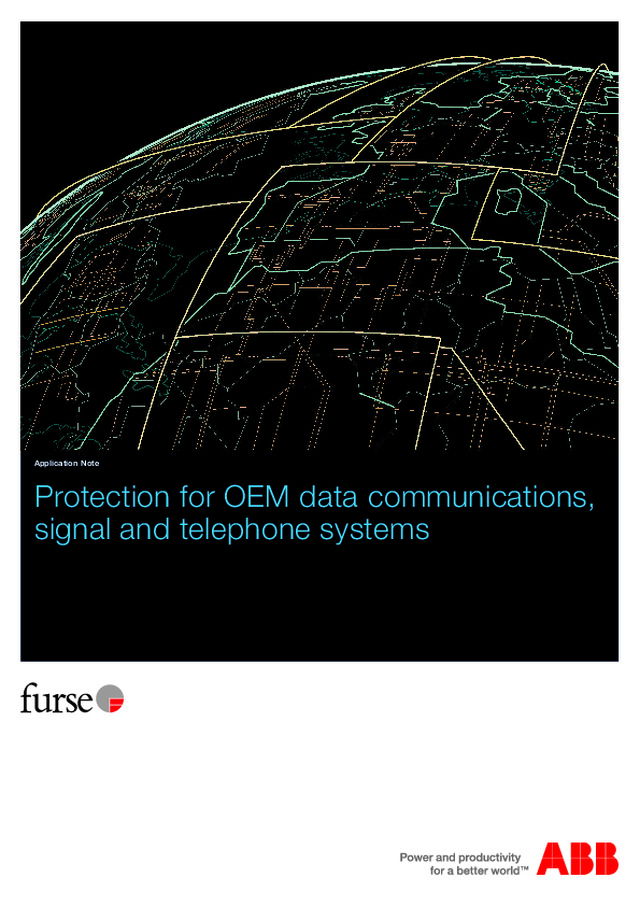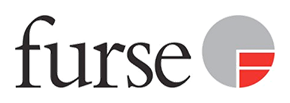Shopping Cart
0 points
Distributor Selection
Select the distributor you would like to use for your shopping cart.
Distributor


Protection for OEM data communications, signal and telephone systems - Furse - 2015
Protection for OEM data communications, signal and telephone systems
Protection for OEM data communications, signal and telephone systems Application Note
Protection for OEM data communications, signal and telephone systems 2 AN0003 | Application Notes - Protection for OEM Data Communications, Signal and Telephone Systems Circuit board layout and design All Furse PCB protection products are capable of handling 10 kA of surge current. The ESP PCB/ Series are electrically the same as the (wire-in) Furse ESP D, SL, E and TN Series protectors (e.g. ESP 06D, ESP SL06, ESP 15E, ESP TN). All these units offer a high level of protection, however with the PCB mount versions the track layout or choice of connectors may restrict the unit’s performance as the line andearth tracks need to be able to handle 10 kA. If the track fails before 10 kA, the surgeprotection offered will be limited to what the track can handle before breakdown. Some guidelines for suitable track layouts are outlined opposite. The track width connected to the outputpins does not affect the surge currentcapabilities, however care must be taken to ensure the transient is not picked up on the output tracks. The dirty (‘line’) tracks should be routedparallel and as close together as possible. This should also be implemented on the clean tracks, however clean (outgoing) tracks should never be routed close and parallel to line (incoming) tracks or dirty barrier earth connections as the transient can be re-introduced after the protector due to electromagnetic coupling (Figures C and D opposite). If it is unavoidable the clean tracks can cross the line tracks at 90°. The use of an earth layer or plane is highly recommended as this reduces theelectromagnetic field produced by a transient discharging to earth considerably, and hence the chance of the transient being picked upon the clean tracks. If multiple lightning barriers are used on a PCB, dirty line and clean lines should be kept at least 20 mm apart (Figure B). This separation distance must still beimplemented on multi-layer PCBs, as the interference will easily pass through the board. If the PCB layout requirements cannot be met, the wire-in Furse D, SL, E and TN series equivalents can be used. For further queries regarding suitabletrack layouts, please contact Furse.
Application Notes - Protection for OEM Data Communications, Signal and Telephone Systems | AN003 3 Good layout and design Do – Keep the input ‘line’ tracks as close together as possible – Keep the output ‘clean’ tracks as close together as possible – Use the largest track width the board can accommodate for the ‘line’ inputs – Balance out the large track width with good track separation to ensure adequate creepage and clearance – Use both top and bottom copper layers on the PCB (if possible) – Use the largest pad size possible, as small solder joints can break down with a transient overvoltage – Position the unit as close to the line input of the PCB as possible, minimising the track distance – Use a high PCB copper plating level, as thicker plating will considerably increase the current handling – Connect the earth to the main star point of the earthing system, routeing away from all other connections – Use an earth layer/plane (if possible), as this will greatly minimise inductance and electromagnetic coupling Figure A: Maximum line to clean separation. Large input tracks and pads (using top and bottom copper layers). Earth pin is bonded to an earth layer/plane. Figure B: All dirty (‘line’) incoming tracks are separated from the clean output tracks, individual line and clean tracks are routed close together. Earth pins are bondedto an earth layer/plane. Bad layout and design Don’t – Route the line inputs (including earth) close to the clean outputs – Create large loops with the line or clean tracks as this will increase electromagnetic coupling Figure C: Output tracks will create a large induction loop and are too close to input tracks. Input pads could be madelarger. Transient will be re-introduced after protector. Figure D: Earth track too close and parallel to output tracks. Input pads could be made larger. Transient will be re-introduced after protector.
© Copyright ABB 2015 A N 00 3 Electronic Systems Protection Equipotential bonding and transient overvoltage surge protection Electronic Systems Protection Equipotential bonding and transient overvoltage surge protection Contact us ABB FurseUK OfficeWilford RoadNottingham NG2 1EBTel: +44 (0) 115 964 3700 Fax: +44 (0) 115 986 0071 Sales Tel: +44 (0) 333 999 9900Sales Fax: +44 (0) 333 999 9901E-Mail: [email protected] Thomas & Betts Ltd. Br.A Member of the ABB GroupMiddle East Sales OfficeOffice 724 6WA West WingDubai Airport Free Zone PO Box 54567 DubaiUnited Arab EmiratesTel: +971 (0)4 609 1635 Fax: +971 (0)4 609 1636 E-mail: [email protected] Thomas & Betts (Saudi Arabia)KSA OfficeBuilding 128Dammam Industrial Area #2PO Box 514Al Khobar 31952Saudi ArabiaTel: +966 13 812 1222 Fax: +966 13 812 1175 E-mail: [email protected] Thomas & Betts Asia (Singapore) Pte Ltd.A Member of the ABB Groupc/o ABB Pte Ltd2 Ayer Rajah Crescent Level 4Singapore 139935Tel: +65 6776 5711 Fax: +65 6778 0222 E-mail: [email protected] www.furse.com Note: We reserve the right to make technical changes or modify the contents of this document without prior notice. With regard to purchase orders, the agreed particulars shall prevail. ABB AG does not accept any responsibility whatsoever for potential errors or possible lack of information in this document. We reserve all rights in this document and in the subject matter and illustrations contained therein. Any reproduction, disclosureto third parties or utilization of its contents – in whole or in parts – is forbidden without prior written consent of ABB AG. Copyright © 2015 ABBAll rights reserved